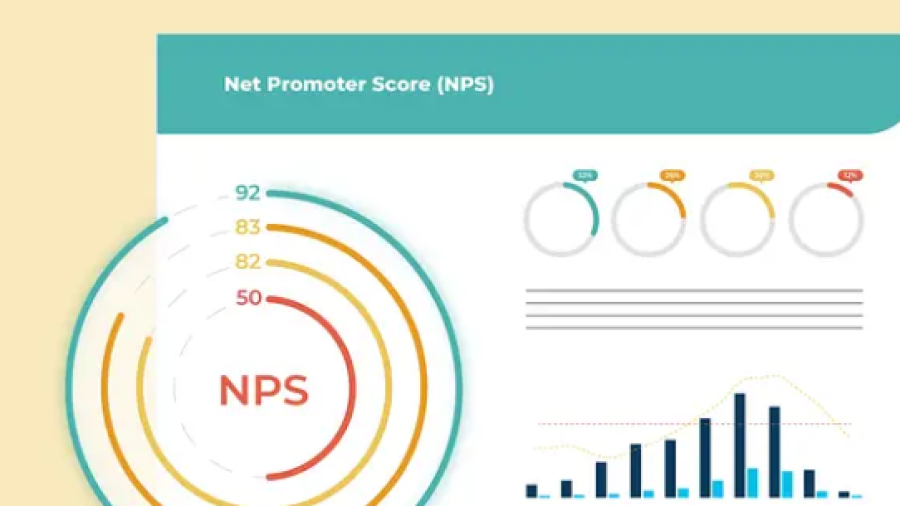In the past two decades, the role of nurse practitioners
(NPs) has expanded beyond what many in the healthcare field once imagined. No
longer confined to supporting physicians in primary care settings, NPs are
increasingly taking on leadership roles in patient management, community health
initiatives, and specialized clinical services. Their growing operational
control in many states reflects both a policy shift and an acknowledgment of
the quality care they provide. This evolution has reshaped expectations for
collaboration and created new opportunities for professional partnerships.
The demand for NPs is fueled by a shortage of primary care
physicians and an aging population that requires more frequent and complex
care. As NPs step into these gaps, they bring unique patient-centered
approaches grounded in both clinical expertise and a strong commitment to
holistic health. Their flexibility allows them to work across different care
settings, from rural clinics to urban hospitals, adapting to diverse patient
needs. This adaptability has made them indispensable members of the healthcare
workforce.
However, with greater expanded authority comes a greater need
for strategic collaboration. The shift from simply finding a physician to work
with toward building a meaningful, mutually beneficial professional
relationship has become critical. The smartest NPs now approach their careers
as a blend of clinical expertise and business savvy, seeking not only legal
compliance but also strategic partnerships that enhance patient outcomes and
professional growth.
From Compliance
to Connection
Traditionally, many NPs began their search for collaborating
physicians as a matter of legal requirement. In states with restricted practice
laws, securing this professional relationship was necessary before practicing
under their own authority. Too often, the process was transactional, focused
narrowly on fulfilling state regulations rather than building a long-term
partnership that could benefit both parties. While this approach satisfied
licensing boards, it left untapped potential for professional synergy.
In a semi-rural area, NPs often face challenges in finding collaborating
physicians. Calls go unanswered, emails receive vague replies, and promising leads
fade. To overcome this, NPs explore targeted methods to connect with physicians.
Building skills to engage potential collaborators boosts confidence, enabling
NPs to network, create impactful outreach, and develop lasting professional
relationships.
Today, leading NPs recognize that collaboration is about more
than compliance. The most effective partnerships are built on shared values,
complementary skill sets, and a joint commitment to patient care. By moving
from a mindset of “finding” to one of “partnering,” NPs can align with
physicians who bring strategic insights, mentorship, and clinical support. In
turn, physicians gain access to dedicated professionals who can help expand
their reach and enhance their practice’s patient care capacity.
Identifying the
Right Fit in a Collaborating Physician
Choosing a collaborating physician is one of the most
important decisions an NP can make, particularly in states where such
arrangements are required. A well-matched partnership can accelerate an NP’s
professional development, improve patient outcomes, and create a more cohesive
care environment. Conversely, a poor match can lead to frustration,
inefficiency, and even patient dissatisfaction. The right fit extends beyond
credentials and availability; it is about compatibility in approach, values,
and work ethic.
An effective first step is to evaluate the physician’s
communication style and willingness to engage in ongoing dialogue. NPs should
seek collaborators who are open to sharing knowledge, discussing treatment
approaches, and offering constructive feedback. A collaborative environment
thrives on mutual respect, which means both parties must value each other’s
contributions. This foundation allows for more effective patient care and a
stronger professional relationship over time.
It is also critical to assess how the physician’s clinical
expertise aligns with the NP’s scope of practice. For example, an NP working in
family care may benefit from collaborating with a physician who has deep
experience in chronic disease management. This alignment not only supports
patient care but also ensures that the NP has access to expert guidance in
complex cases. Selecting a partner based on shared clinical interests can
create a more seamless workflow and foster deeper trust between providers.
Structuring the
Partnership for Long-Term Success
Once an NP has identified a suitable physician partner, the
next step is to define the terms of the relationship clearly. This includes
outlining roles, responsibilities, and expectations on both sides. Written
agreements can help prevent misunderstandings and ensure that both parties have
a shared vision for how the partnership will operate. While some states have
specific requirements for such agreements, going beyond the legal minimum can
strengthen the relationship.
Successful partnerships often incorporate regular check-ins
to discuss patient care issues, operational challenges, and new opportunities
for collaboration. These meetings are not merely administrative; they are
opportunities to build trust and refine the working relationship. A
well-structured partnership is dynamic, adjusting to changes in patient
populations, clinical guidelines, and practice management needs.
Financial arrangements should also be addressed openly from
the start. Transparency in compensation models, shared resources, and liability
coverage helps maintain goodwill and prevents conflicts. When both parties feel
that the arrangement is fair and beneficial, they are more likely to invest in
the long-term success of the partnership.
Leveraging
Technology for Collaboration
Technology has become a vital tool in maintaining strong
NP-physician relationships, especially for those who work in different
locations. Secure messaging platforms, shared electronic health records, and
teleconferencing tools allow for real-time consultation and decision-making.
These technologies help bridge geographic gaps, making it easier for NPs in
rural areas to collaborate with physicians in larger urban centers.
Digital tools also improve efficiency by centralizing patient
information and reducing the likelihood of miscommunication. When both parties
have access to the same data, they can make informed decisions more quickly and
with greater accuracy. This is particularly important in fast-paced clinical
environments where timely interventions can significantly affect patient
outcomes.
Furthermore, technology can support continuing education and
shared learning opportunities. Webinars, online case reviews, and digital
journal clubs allow NPs and physicians to stay aligned on best practices and
emerging research. By integrating these resources into their collaborative
routines, NPs and physicians can keep their partnership both clinically
relevant and forward-thinking.
Building Trust
Through Consistency and Integrity
Trust is the cornerstone of any successful professional
relationship, and NP-physician collaborations are no exception. Trust is built
through consistent actions, open communication, and a shared commitment to
ethical patient care. When both parties operate with transparency and
reliability, they create a stable foundation that can withstand the pressures
of a demanding healthcare environment.
Consistency in clinical judgment is especially important.
Discrepancies in treatment approaches can erode confidence unless addressed
promptly and respectfully. By discussing clinical philosophies early and
revisiting them as needed, NPs and physicians can ensure that they are aligned
in their care delivery methods. This consistency not only improves patient
trust but also strengthens the professional bond between providers.
Integrity in business dealings is equally important.
Financial transparency, clear billing practices, and adherence to all
regulatory requirements reinforce the trust that underpins the collaboration.
When both parties know they can rely on each other to act ethically, the
partnership becomes more resilient and better equipped to navigate challenges.
Overcoming
Common Challenges in NP-Physician Partnerships
Even the most carefully selected and structured partnerships
will face challenges. Differences in communication styles, workload
distribution, and decision-making can lead to friction. Addressing these issues
early and directly is essential for preserving the relationship. Avoiding
difficult conversations can cause small problems to grow into larger conflicts.
One common challenge is balancing clinical authority with
collaboration. NPs often value their freedom, while physicians may have
specific preferences for treatment protocols. Striking the right balance
requires mutual respect and a willingness to compromise. Regular check-ins and
clear boundaries can help prevent misunderstandings.
Another frequent hurdle involves adapting to changes in
healthcare policy or organizational structure. Regulatory updates can alter the
scope of practice, reimbursement models, or documentation requirements.
Partnerships that remain adaptable and proactive in responding to these changes
are more likely to thrive. By viewing challenges as opportunities for growth,
NPs and physicians can strengthen their collaboration rather than allowing it
to erode.
The Future of
NP-Physician Collaboration
As the healthcare landscape continues to evolve, NP-physician
partnerships will remain a vital component of patient care delivery. Increasing
emphasis on team-based care, value-based reimbursement, and population health
management creates fertile ground for deeper collaboration. The most successful
partnerships will be those that go beyond compliance to embrace innovation and
shared leadership.
In the coming years, we can expect technology to further
enhance collaborative opportunities. Artificial intelligence, predictive
analytics, and advanced telehealth capabilities will allow NPs and physicians
to work together more efficiently and effectively. These tools will support not
only patient care but also strategic decision-making at the practice and
organizational levels.
Ultimately, the smartest approach for NPs will be to
cultivate partnerships that are both personally and professionally fulfilling.
By investing in relationships that are built on trust, shared vision, and
mutual respect, NPs can transition from simply searching for collaborators to
truly partnering in the delivery of high-quality, patient-centered care.









